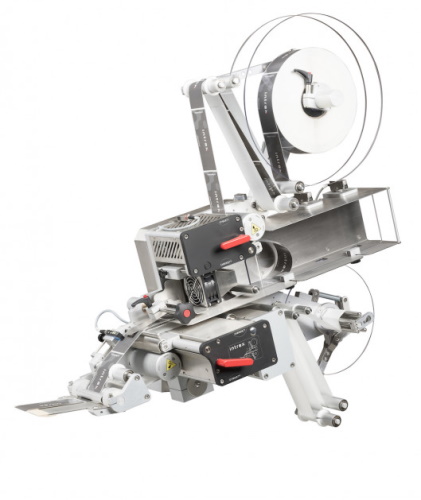Changes to Food and Drink Labelling
from January 1st
For the last four years, many businesses across the country have been wondering what changes would face them on January 1st, when the UK officially left the EU.
For producers, manufacturers, retailers and suppliers of food and drink products, new changes to labelling were introduced, presenting a new set of rules to adhere to.
As UK businesses fight to overcome the operational challenges of navigating the Coronavirus pandemic, these looming changes to your production may seem like yet another unfortunately timed test of your resilience, but we have good news.
Changes to Food and Drink Labelling
Regarding the changes introduced from Jan 1st 2021, The Food Standards Agency point to Food Standards: Labelling and Composition guidance, which applies to the following products:
Bottled water, Bread and flour, Cocoa and chocolate products, Fats and oils, Fish, Fruit juices and nectars, Honey, Jams and marmalade, Milk products, Products containing meat, Soluble coffee and Sugars.
In over 2000 words, the guidance mostly explores regulations that producers of the above products will already be following. In fact, you have to do an awful lot of scrolling (or reading in our case), to find guidance related to changes effective from January 1st 2021.
The big food and drink labelling changes of 2021 actually apply to the production of a single product made in accordance with this particular guidance.
Honey.
For most of you, you can breathe that sight of relief now! For producers, manufacturers, retailers and suppliers of honey, read on!
Current Labelling Guidance
Existing composition and labelling guidance for honey products is outlined in the Honey (England) Regulations 2015, which provides reserved descriptions that must be used to detail:
- The source from which the honey is obtained (for example, blossom, honeydew)
- The processes by which it’s extracted (for example, drained, extracted)
- The way it’s presented (for example, comb, chunk honey)
These regulations also detail the general composition specifications and quality criteria honey must meet.
Products using reserved descriptions (comb honey, or honeydew honey etc) must be made according to the compositional criteria associated to each one.
The 2015 regulations also include a requirement for honey products to include country of origin labelling.
For honey products made from blends of honey from more than one country, your label could read, “Blend of honeys from more than one country” rather than listing various countries of origin.

What Are the Changes to Food and Drink Labelling?
It’s this country of origin labelling that must be changed to comply with new regulations.
No need to panic though! Honey already on the UK market before January 1st 2021 can stay on shelves using the origin wording correct at the time (EU terms):
- “Blend of EU honeys”
- “Blend of non-EU honeys”
- “Blend of EU and non-EU honeys”
Due to the UK leaving the EU, honey blends sold in England and Wales Until September 30th 2022, must include adapted wording:
- “Blend of honeys from more than one country” (or similar wording)
- “Blend of EU honeys”
- “Blend of non-EU honeys”
- “Blend of EU and non-EU honeys”
If you continue to use EU terms, you must either list all countries of origin separately, or use the exact term “blend of EU and non-EU honeys”.
From October 1st 2022, those productions opting not to list all countries of original, must use a term such as “blend of honeys from more than one country”.
For honey blends sold in Scotland, country of origin must be labelled in the following way:
- “Blend of honeys from more than one country” (or similar wording)
- Reference to the trading bloc of the countries of origin (for example, ‘blend of EU honeys’, ‘blend of non-EU honeys’ or ‘blend of EU and non-EU honeys’)
For blends of honeys put on the Northern Irish or EU markets, your country of origin labelling must state that GB honey is no longer EU honey, by using one of the following terms:
- “Blend of EU honeys”
- “Blend of non-EU honeys”
- “Blend of EU and non-EU honeys”
If you continue to use EU terms for country of original labelling on honey blends sold in Scotland, make sure your labelling is adapted.
For example, for a blend of English and French honey sold in Scotland, the label must list all countries of origin, or use the exact term “blend of EU and non-EU honeys”.

Food and Drink Labelling
For more information about food labelling, see the free e-learning course from The Food Standards Agency, and ensure to check back with them for further changes, and up to date legislation.
At Codetronix, we pride ourselves not only on the market-leading range of coding and marking, and labelling systems we provide, but the advice we can offer, pulling from our years of experience and industry expertise.
Partners with Macsa ID and Intrex, we supply both Macsa ID print and apply labellers and Intrex label applicators.
Whether you need us to help you identify the appropriate solution for your specific production, or you what you need, get in touch today.
Whatever your application, Codetronix can offer you advice to help you find the best solution. If you would like further information, please contact us on [email protected].
Interested in increasing production capacity with labelling automation? To find out more about Codetronix can help your business improve its coding and marking processes, get in touch and one of our sales team will contact you.
Address
Carrwood Park
Swillington Common Farm
Selby Road, Leeds
LS15 4LG
Quick Links
